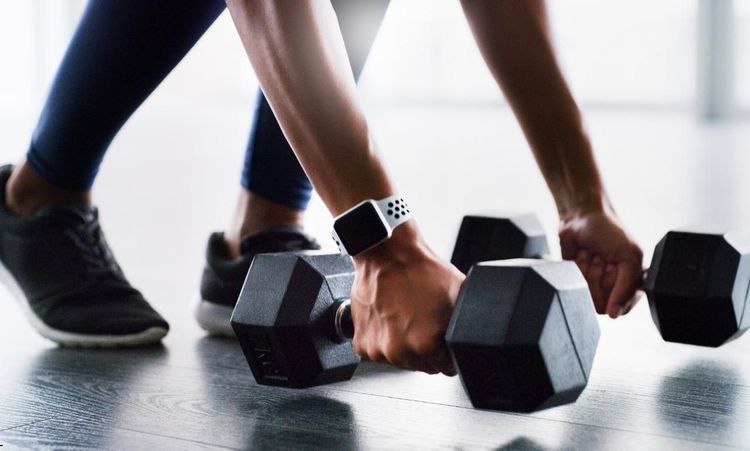There’s a moment every home gym builder faces. You’ve got your barbell, a few plates, maybe a bench. Then you realize something’s missing — the squat rack.
It’s not just another piece of gym gear. It’s the backbone of serious training. Without it, you’re limited, cautious, and sometimes unsafe.
So, what squat rack should you purchase? That depends on how you train, how much space you have, and how serious you are about lifting.
In this guide, we’ll break down why a squat rack matters, what to look for, and which models deserve your attention. You’ll find comparisons, real pros and cons, and a few insights only lifters understand.
Let’s build your foundation for strength.
Why Invest in a Squat Rack?
Every lifter, beginner or pro, needs one essential thing — stability. A squat rack gives you that. It’s your safety net when the bar gets heavy.
Picture this: you’re under a loaded barbell, legs trembling, balance shifting. Without a rack, that situation turns risky fast. With one, you have support, safety pins, and confidence.
A good squat rack opens up more than just squats. It’s a full training station. You can bench, press, rack pull, or even do pull-ups if the rack allows.
It’s also a money saver. Gym memberships add up over time. Investing in your own rack pays for itself within a couple of years.
But the biggest benefit? Freedom. You train when you want. No waiting. No sharing equipment. Just you, your bar, and the iron.
A squat rack is like the stage for your strength story. It’s where progress happens rep by rep.
How to Select the Best Squat Rack for Home Gym Use
Buying a squat rack isn’t as simple as picking the first one you see online. The best rack for you depends on a few key things — space, budget, training style, and future goals.
First, measure your space. Sounds obvious, but many skip this. You need enough height for overhead lifts and enough depth to move freely.
Second, check the steel gauge. Lower numbers mean thicker steel. For example, 11-gauge steel is stronger than 14-gauge. If you plan to lift heavy, go thick.
Third, think about footprint. Some racks are compact, others take half your garage. Choose based on your workout flow and storage needs.
Fourth, don’t overlook safety features. Adjustable J-hooks, spotter arms, and safety pins aren’t extras — they’re essentials. They protect you when lifting solo.
Finally, consider attachments and future upgrades. A rack that grows with you is worth the investment. Add-ons like dip bars, landmines, or pull-up stations can turn a simple frame into a full gym setup.
Choosing the best rack is personal. Ask yourself: will this rack still work for me in five years? If yes, that’s your winner.
T-3 Series Squat Stands
Let’s start with the T-3 Series. If you’re building your first home gym or upgrading from a makeshift setup, this series might be your match.
The Titan T-3 squat stands are designed for affordability without cutting corners on safety. They’re built from durable 11-gauge steel, offering strength and reliability for most lifters.
Compact yet sturdy, these stands fit comfortably in garages, basements, or tight corners. You can move them around easily, which is great if your space doubles as a multipurpose room.
Despite their smaller size, the T-3 stands can handle impressive weight loads. Most models support up to 1,000 pounds. That’s plenty for the average home lifter.
Another plus is adjustability. The J-hooks can be repositioned quickly, allowing smooth transitions between exercises. You can go from squats to bench presses without hassle.
However, T-3 stands aren’t ideal for extreme powerlifters. They don’t have the same base stability as full racks. But for everyday training, they’re reliable, safe, and cost-effective.
If you want to start strong without emptying your wallet, the T-3 Series is a solid entry point. It’s proof that you don’t need a massive rack to train seriously.
X-3 Series Squat Stands
Now let’s talk about the X-3 Series. Think of these as the heavyweight cousin of the T-3s — more muscle, more stability, and more potential.
The X-3 stands are made from thicker 3x3-inch 11-gauge steel, giving them a rock-solid frame. This makes them ideal for lifters who push serious weight.
You’ll immediately notice the difference during heavy squats. The rack doesn’t shake or tilt. It stays grounded, giving you complete confidence with every lift.
The X-3 also supports modular expansion. That means you can start with the stand and later upgrade to a half rack or full rack setup. It’s like buying the foundation for a future fortress.
Add-ons are another highlight. You can attach spotter arms, pull-up bars, or dip handles without compatibility issues. It’s flexible, customizable, and built for growth.
These stands appeal to intermediate and advanced lifters who want something that feels professional but fits in a home space.
The price is higher than the T-3, but the durability justifies it. You’re buying long-term quality, not a short-term fix.
If your training is serious and you want your equipment to keep up, the X-3 Series delivers without compromise.
Comparing T-3 and X-3 Series
It’s time to put the T-3 and X-3 head-to-head. They might look similar at first glance, but they serve different needs.
The T-3 Series targets beginners or moderate lifters. It’s more budget-friendly, lighter, and easier to move around. Perfect for garages or apartments with limited space.
The X-3 Series, on the other hand, is built for serious strength athletes. It’s heavier, stronger, and designed to withstand intense sessions without flinching.
Both use quality steel, but the X-3’s thicker uprights give it a stability edge. You’ll feel it the moment you re-rack after a tough set.
Price difference? Yes, but think long-term. If you plan to lift for years, investing in the X-3 pays off.
However, not everyone needs that level of sturdiness. For casual lifters, the T-3 performs beautifully without overkill.
In simple terms:
- Go with the T-3 if you want value, portability, and versatility.
- Choose the X-3 if you crave power, permanence, and peace of mind under heavy weight.
Both racks carry Titan’s dependable build quality. It really comes down to your goals and lifting ambitions.
The Titan X3 Half Rack
Now, let’s introduce something in between — the Titan X3 Half Rack. It’s where practicality meets professional-grade construction.
The X3 Half Rack is the evolution of the X-3 squat stand. It adds more stability, storage, and training options without taking over your room.
Built from 3x3-inch 11-gauge steel, this half rack feels immovable. You can load it up without worrying about wobble or imbalance.
The design includes safety spotter arms, adjustable J-hooks, and built-in plate storage. It’s the ideal balance of strength and efficiency.
One thing lifters love? The pull-up bar integration. It turns your squat rack into a complete upper-body training tool. Add dip handles or landmine attachments, and you’ve got a full gym station.
Many choose the X3 Half Rack because it feels like commercial-grade equipment. You get that gym-level stability without sacrificing home space.
It’s also expandable. As your goals evolve, you can add attachments or convert it into a full power rack later.
The X3 Half Rack is for those who want a future-proof setup — something that grows with their training. It’s the “buy once, cry once” option. Pay more upfront, and you’ll never need to replace it.
Conclusion
Choosing a squat rack isn’t just about metal and bolts. It’s about your goals, your environment, and your training philosophy.
If you’re asking what squat rack should you purchase? — the answer lies in how you train.
The T-3 Series is excellent for beginners and budget-conscious lifters. It’s compact, safe, and reliable for everyday workouts.
The X-3 Series stands tall for experienced athletes. It offers unmatched stability and customization for years of heavy lifting.
And the Titan X3 Half Rack sits in the sweet spot. It’s powerful, space-efficient, and adaptable — a true long-term investment.
Remember, your rack becomes the core of your gym. Every lift, every milestone starts and ends there.
So take your time. Measure your space. Match your ambition. Then make your choice with confidence.
Because when you invest in the right squat rack, you’re not just buying equipment — you’re building consistency. And that’s what real progress looks like.




